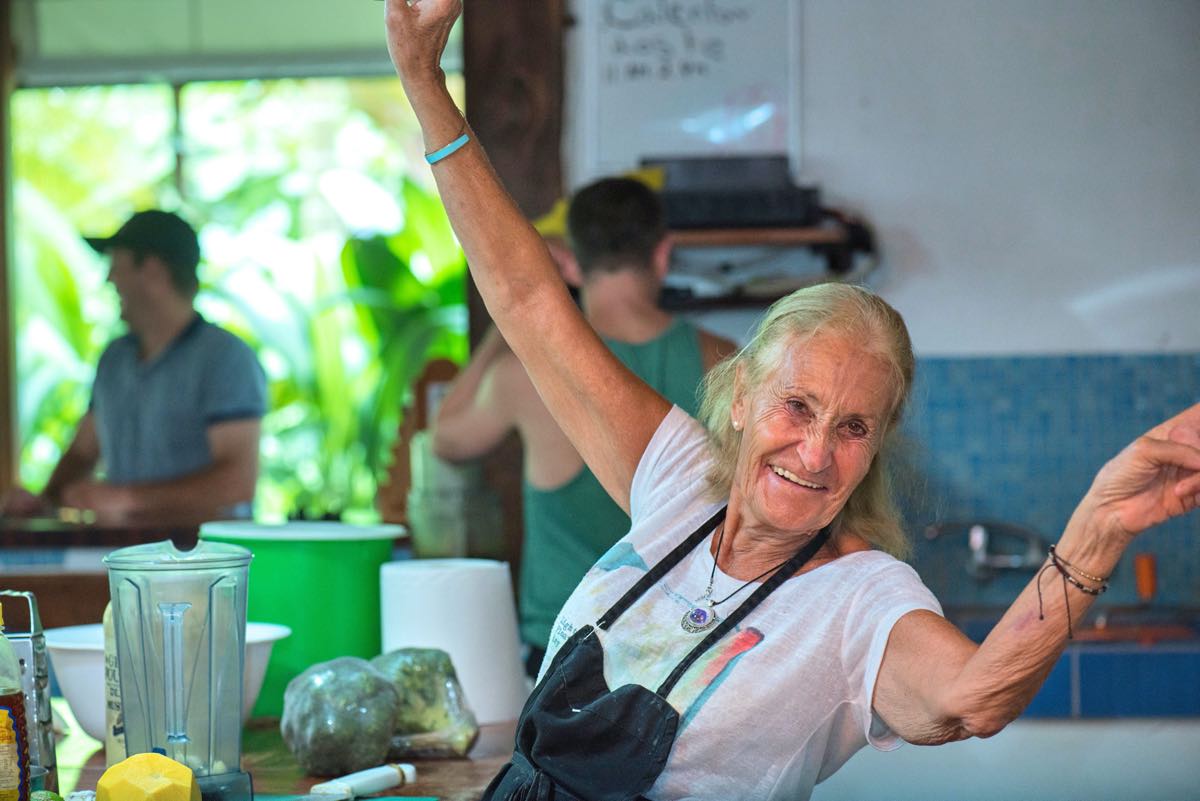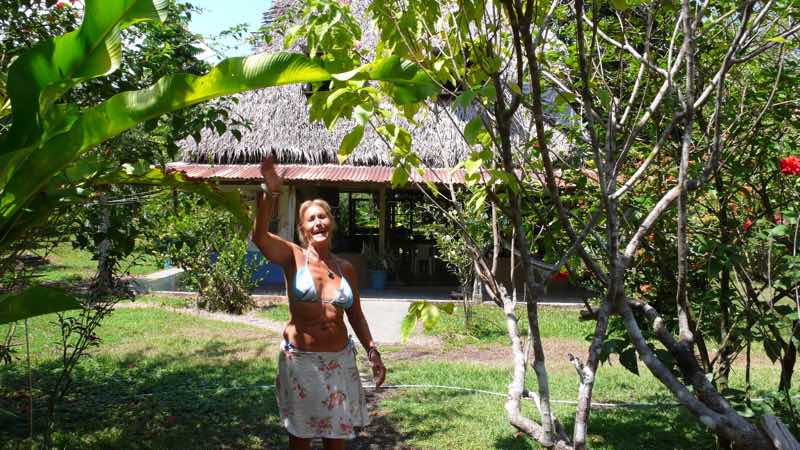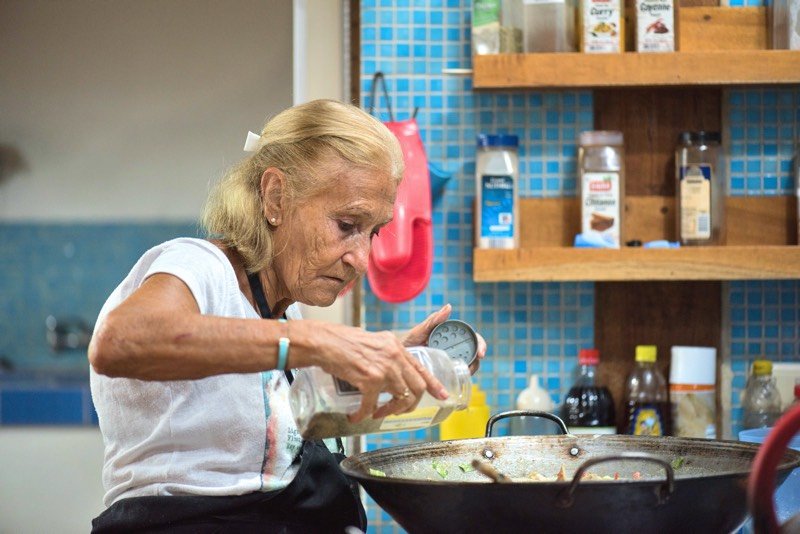What is real Costa Rica Food? We would like to introduce you to Chef Marie and learn about what makes her Costa Rican-inspired dishes so special.
Marie is buzzing around the kitchen, singing words in her French-Spanish-English fusion. While you can not see her behind the staff of tall and wide men, Chef Marie fills Blue Osa with creativity and light.
It is not uncommon to hear this stylish and steadfast matron say she doesn’t work when she is at Blue Osa. For Maire, cooking is not work because cooking is her passion, and passions are not work.
For the rest of us mortals, spending hours in the kitchen definitely is work.
This Little French Chef Takes on Costa Rican Food
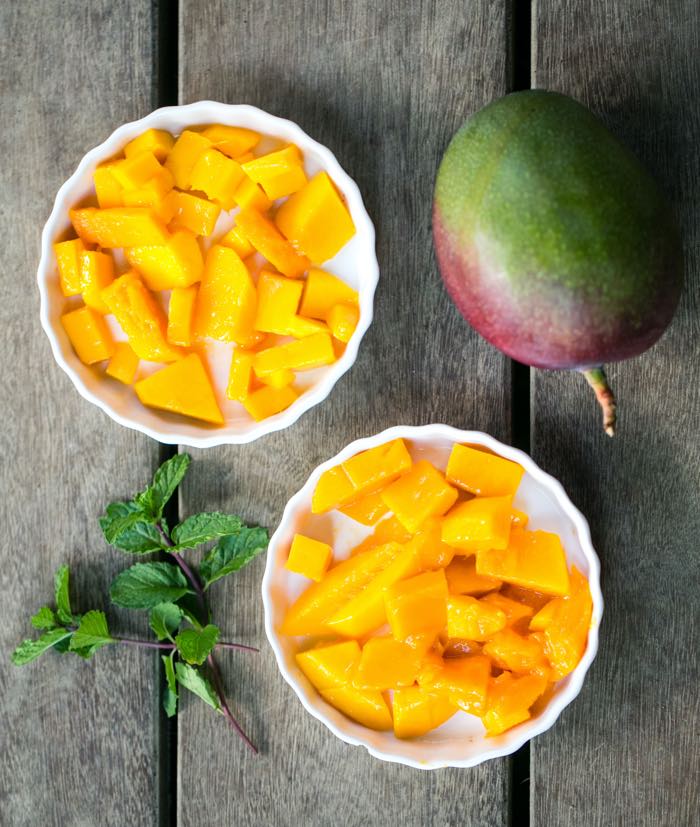 This is easy to understand when you see the results of her tireless work and spreads garnished with care.
This is easy to understand when you see the results of her tireless work and spreads garnished with care.
Whether it is Thai curry, savory lentil salads, picadillo de chayote, or upside-down pineapple cake. The Blue Osa menu is one of exciting diversity in taste, origin and ingredients. The menu is a dedication to the best of what real Costa Rican Food is supposed to be.
Every dish is delicious; most definitely mouthwatering, clean, feel-good food. But more than that, they’re colorful and fragrant pieces of art.
Costa Rica is a hub of tropical flora and fauna. In fact, the Osa Peninsula has 2.5% of the Earth’s biodiversity. Between the birds, plants, insects, and ocean dwellers, the color and beauty of our surroundings can be awe-inspiring. So, it only makes sense that the Costa Rican food we eat should be as majestic.
Bright yellow mangoes and limes so green you can see their tartness. The carrots pulled from our farm’s nutrient-rich grounds are as sweet as they are orange. And of course, let us not forget the subtle heats of chile peppers. You can imagine them from their fire-hot tones alone.
Thinking like this, we can begin to enter the mind of this mastermind. Or (as Marie would say in her customary language blend,) the mind of a maternal cocinera extraordinaire.
So, what has led Chef Marie to this artistry of the kitchen?
Who Is Chef Marie
Born in Algeria, Chef Marie grew up along the French coast near the Spanish border. Her favorite cuisines are French, of course, and Mexican with favored dishes ranging from Coq au Vin to Sopa de Pescado.
Marie is a self-taught chef, learning throughout her life’s work. She will often mention her late husband, Jean-François, who was a chef himself. Marie credits his passion and teachings often saying, “I learned a lot from my husband.” Together they operated a stylish French bistro in San Francisco. Much later, they opened an elegant grand French restaurant in Cartagena.
On their first trip to Costa Rica, the couple first visited Tamarindo. It is a resort community on Costa Rica’s Northern Pacific coast, where their daughter had a home.
Like many visitors, the land and its people captivated their imagination. For that reason, they soon owned a beachfront property in the Osa Peninsula.
You read that right: Marie and her husband were the owners of this beautiful property.
One day after Jean-François passed away in 2006, Maria heard voices along the front wall where a “For Sale Century 21” sign had been reluctantly placed.
Opening the gate, she encountered Aaron and Adam. Consequently, Marie was so inspired by their vision of Blue Osa, she offered to stay for a brief time to assist them with its development.
And now, fourteen years later, she continues to greet guests in her French accent and with a sparkle in her eye, exclaiming her catchphrase, “Voila!”
Chef Marie at Blue Osa || Real Costa Rican Food Brought to Life
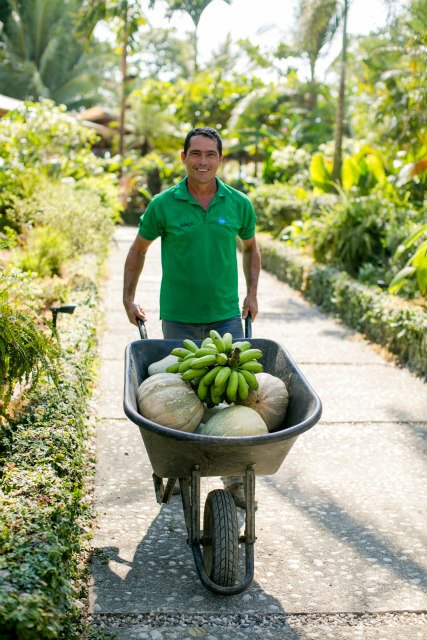 Our favorite French chef who has cooked all over the world, now approaches the creative challenge of preparing authentic local Costa Rican dishes.
Our favorite French chef who has cooked all over the world, now approaches the creative challenge of preparing authentic local Costa Rican dishes.
In her style, Marie has infused the best of all cuisines. She highlights the most authentic Costa Rican foods. The history of real Costa Rican food lies in its fresh farm-to-table approach. We are lucky enough here to grow a variety of produce that act as Chef Marie’s inspiration.
This can be a challenge in itself: what foods will be available on any given day from Blue Osa’s organic garden and local farmers?
Marie often modifies favorite recipes. Sometimes, she even surprises herself with its taste and creativity.
Marie is very mindful of diners’ health and dietary needs. “French food is rich in butter, milk, eggs, and cream and we are careful to respect our yoga guests.”
Menus are vegan-oriented, with fish or meat occasionally served in family-style dining.
AN INTERVIEW WITH THE CHEF HERSELF ABOUT REAL COSTA RICAN FOOD AND COOKING
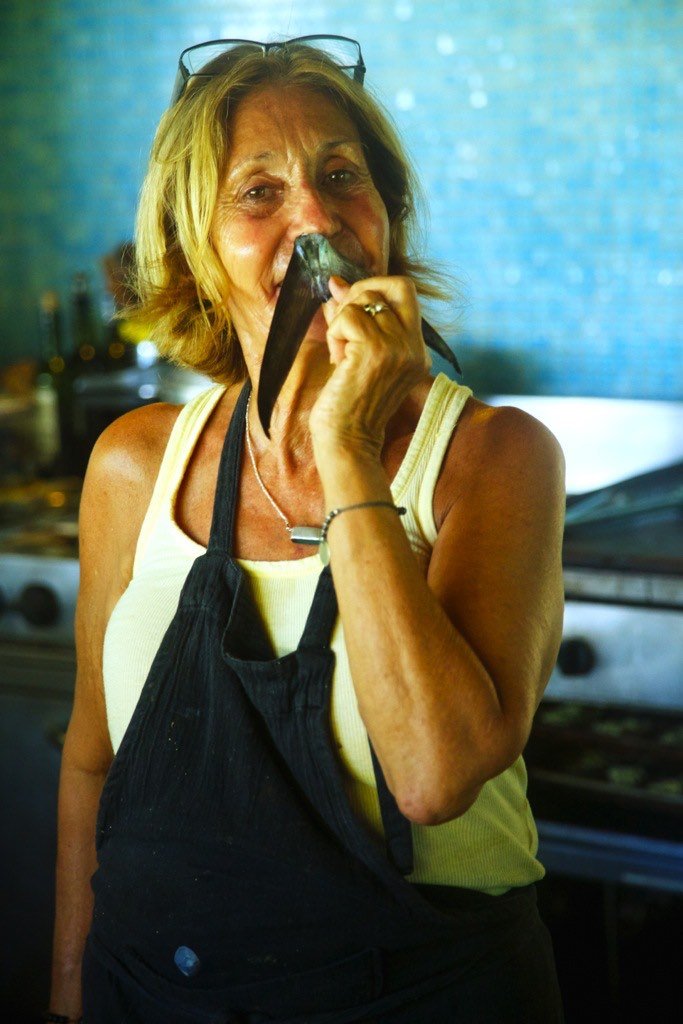
1) 1) FLAVORS AND NOTES
Q: The overlying flavor trends are obvious: spicy/heat and global/ethnic. But what are some of the subtle trends going on that are not necessarily characterizing flavors of the dressing, marinade or sauce? Floral notes? Combination citrus? East meets West? Heat with sweet?
A: Marinade and sauces are not the same. You have to prepare a marinade for a long time and it changes the texture and flavor of the meat or fish. The marinade gives a taste for everything. But the sauce, although very important only accents the dish.
For using floral notes, it really depends. Floral notes are really strong. For someone not accustomed to cooking with them, florals can really give a dish an unpleasant taste.
In my recipe book for the coconut encrusted Mahi Mahi, we use heat with sweet, which helps to greatly accent the full flavor of the mahi-mahi. I highly recommend you to taste and play with the portions.

2) Spice It Up
Q:When it comes to spicy/heat, sriracha seems so yesterday. What are some of the new spices and/or heat ingredients making their way into dressings, marinades or sauces? What combinations work well together and why?
A:We use sriracha and other spices all the time in my cuisine. Remember what is yesterday, can be new tomorrow. It depends on how you use it.
One of my favorite secret kitchen tricks is to use fresh vanilla–it has to be fresh–in white sauce with lime. This combination is exotic, rich and smooth to the palate.
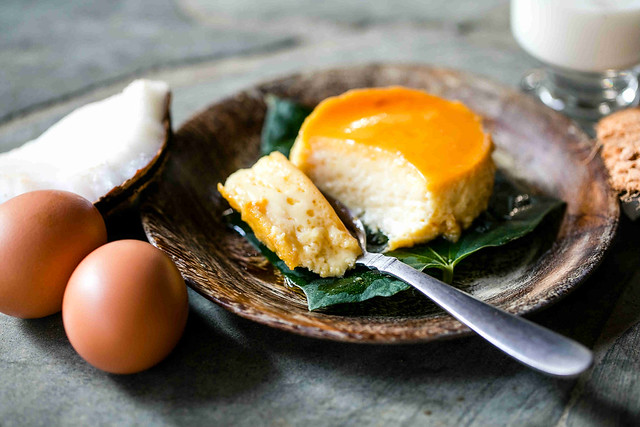
3) Worldly Flavors
Q:When it comes to global/ethnic, Asian, Italian, and Mexican are descriptors that are fading away and being replaced by more worldly terms. Please comment on this statement: The global flavor trend should not be referred to as “ethnic,” as this is actually insulting to true culinary professionals. Rather, the term “worldly” is preferred, which is a nod to traditional recipes using authentic cooking methods and fusing in personal culinary touches that build on flavors to create diverse flavors.
A:This is very true. A cook today blends all tastes together.
I had Marie write her response out in French. You can translate it as you wish.
“je pense que dans la nouvelle cuisine il y a une question de mode les noms changent mais la base des recettes Mexicaines italiennes chinoises ou francaises sont les memes le gouts changent mais les ingredients sont les memes les recettes de nos grandmeres redeviennent a la mode”
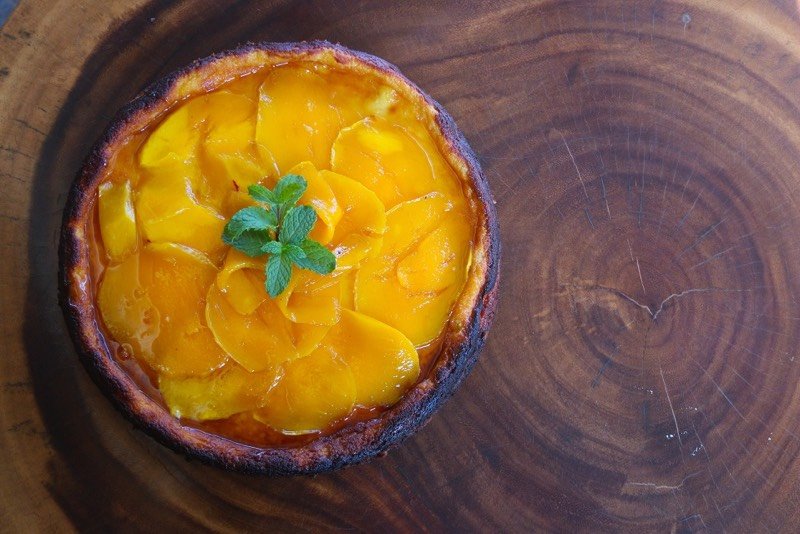
4) CHEF MARIE’S MAGICAL MARINADES
Q:Please describe some of your personal worldly dressings, marinades or sauces favorites. What flavor combinations work well together and why?
A:La Marinade that is my favorite for fish is one that is simple and basic: Olive Oil, lemon zest, fresh thyme and rosemary, a little grated ginger, fresh ground red pepper, and a little salt.
The simple marinades are used to bring the full flavor of the food. After you marinade the fish for 3 hours, you cook the fish as you like. Your mouth will be watering as you smell the flavors merging together.
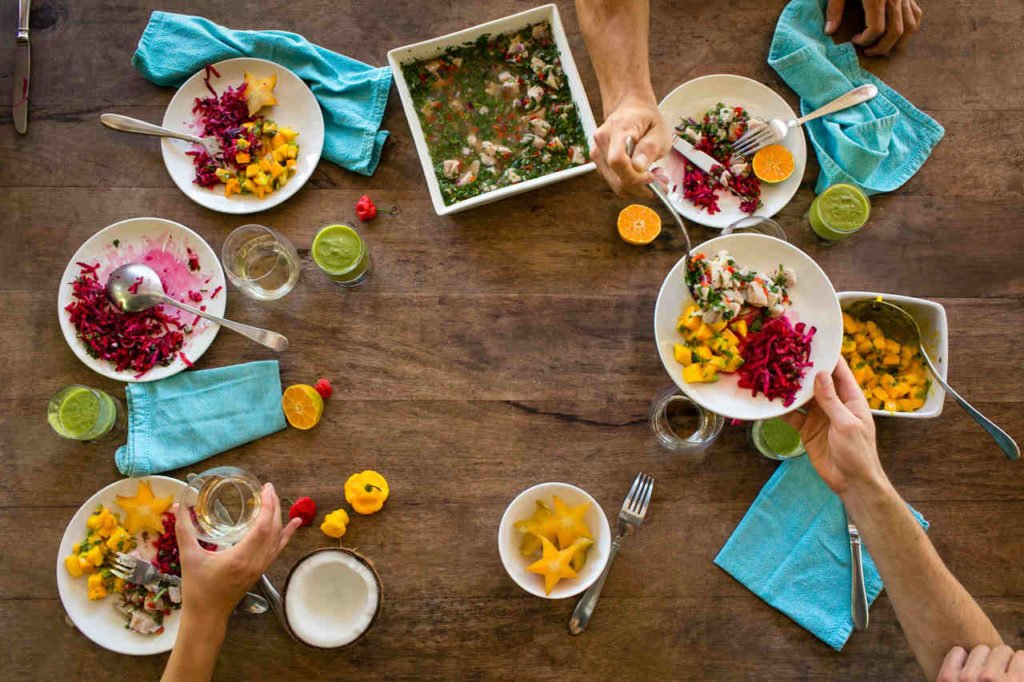
5) Chef Marie’s Go-To Ingredients
Q:Everyone has their favorite flavor ingredient. For example, some culinologists will always work a little Parmesan into a recipe. Others swear by cracked peppercorn. Still, you have the chef who will add a couple of drops of soy sauce to every recipe…even kielbasa! What are your go-to flavoring ingredients for dressings, marinades or sauces and why?
A:For me, my favorite secret ingredient is honey when making marinades for chicken. The combination of honey with hot or sour just works. Honey is so sweet and beautifully caramelizes the meat.
6) Millennial Flavors
Q:How will millennials drive flavor innovation in dressings, marinades or sauces?
A:On the one hand, I think that many millennials are losing their palate for the taste of refinement of good food, or at the very least, in how to make good food. Many people want the tastes they are accustomed to: ketchup, mayonnaise, mustard.
On the other hand, I am excited to see how many gastronomy style of restaurants are opening and experimenting with tastes and food.
In my classes and book, Eating Clean In Costa Rica, I encourage people to play with food and different tastes. One day, add a little more thyme to the marinade, and the next time, add less and see how it tastes. Teach your palate different tastes and most importantly, have fun in the kitchen.
Chef Marie’s beloved recipes are one of the best components behind the incredible Blue Osa experience. Her healthy meals help our guests experience the full benefit of a yogic lifestyle. Get your hands on our cookbook and try her delicious creations from your home!
If you’re inspired to try your hand at Marie’s recipes, you can order the Blue Osa cookbook here!



